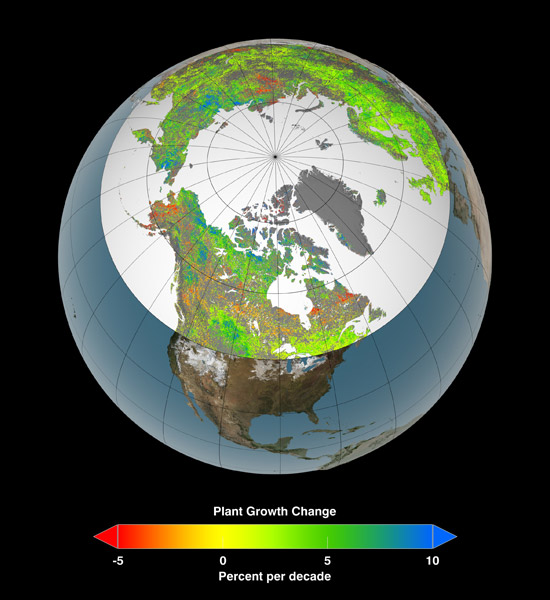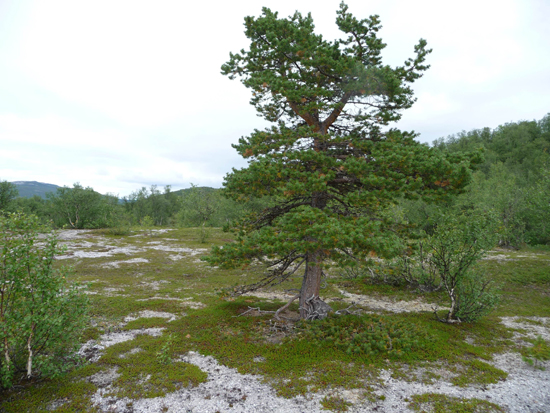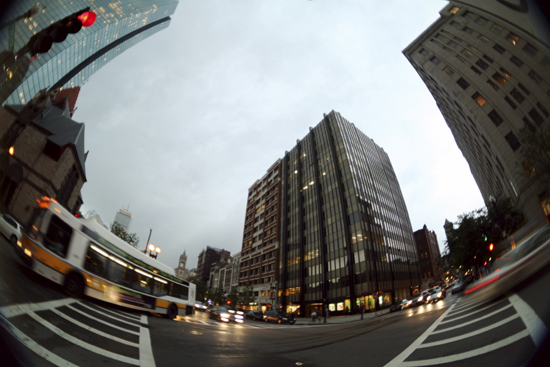The Climate Crisis: Tracking Change, Predicting Trouble
By century's end, Arctic will feel like US South
In this weeklong series, BU researchers explore the science behind Earth’s environmental changes, and what they mean for our future.
Winter is getting warmer, spring is coming earlier, and plants are enjoying an extended growing season in northern areas. But that is not good news.
“It’s the initial gold rush,” says Ranga Myneni, a College of Arts & Sciences professor of earth and environment, but what will follow will not be pleasant. As vegetation flourishes, it could draw down the water supply, bringing on drought, insect infestations, and forest fires. What was once green, lush land could become brown and barren.
In an article published in Nature Climate Change on March 10, Myneni and 21 collaborators describe how seasonal temperatures and vegetation north of the U.S.-Canada border have shifted over the past 30 years to what is typically experienced four to seven degrees latitude to the south. Should global warming continue at its current pace, Bruce Anderson, a CAS associate professor of earth and environment, who worked with Myneni on the paper, predicts a further latitudinal shift of as much as 20 degrees south by the end of the century. That means arctic and boreal regions of Canada would look and feel much more like the southern United States.

“We have no precedent for this in all of geological history,” Anderson says. “We’re running an uncontrolled experiment.”
Myneni has been sounding the alarm on rising temperatures and increased vegetation in these regions for decades, but with this article he hopes to push the envelope by framing change in terms of seasonal shifts.
Seasons are determined by two factors: the Earth’s tilt, and the planet’s orbit of the sun. Both change only in small, barely perceptible increments over tens of thousands of years. “This is the natural state of affairs,” Myneni says. But, “if you change the solar radiation distribution on our planet, you can change the climatic character of the seasons—most importantly, the temperature difference between winter and summer.”
So, Myneni asks, are seasons changing because of a shift in solar radiation, or is it something else?
The work of American scientist Charles David Keeling helps answer that question. Every year from 1958 to 2005, Keeling measured the level of carbon dioxide in the atmosphere from points in Hawaii and Alaska. His data showed that levels of the gas have been increasing over time and that they fluctuate in an annual cycle as plants absorb carbon dioxide and release oxygen (or photosynthesize) during the northern hemisphere’s growing season, and reverse modes (or respire) during the dormant season. Keeling noticed that swings in this cycle, now called the Keeling Curve, were getting larger and were most pronounced during photosynthetic periods. More photosynthesis meant more green, leafy vegetation around the globe.

Myneni was fascinated by Keeling’s discoveries. As a postdoc at NASA’s Goddard Space Flight Center in the early 1990s, he had access to satellite imagery that mapped the Earth’s “greenness,” or vegetation. On a whim, he cold-called Keeling to see if he could compare a decade of satellite data about greenness with carbon dioxide levels Keeling had been plotting over time. The two data sets overlaid nicely. In 1997, Myneni published his findings in Nature, concluding that plant growth in the northern hemisphere had increased by as much as 10 percent over the previous decade, that the increase was driven by a warmer growing season, and that spring was arriving earlier.
So why the warmer growing season? Myneni doubted it was because a god who’s “pissed off at us flips the Earth and the tilt changes” to alter the seasons. He thought it was because people were pumping more greenhouse gases into the atmosphere.
Like other climate scientists, he thought the rising levels of carbon dioxide and other greenhouse gases like methane were absorbing thermal radiation reflected from the Earth, preventing it from escaping the atmosphere. This causes a greenhouse effect, which scientists believe has led to changes like the rise of ocean temperatures, polar ice cap melt, and more land mass exposed to the sun’s rays. The sum effect is a positive feedback loop that continues to warm the Earth, shifting seasonal temperatures.
Myneni noticed that winter temperatures were increasing faster than summer temperatures, leading to earlier springs and a longer growing season. NASA satellite imagery reflected this shift too, with arctic and boreal regions in North America and Eurasia showing an increase in vegetation over recent decades. Compton Tucker, a senior scientist at the Goddard Space Flight Center and another contributor to the paper, says that one third of the northern landscape—a patch roughly the size of the United States—shows vigorously productive vegetation similar to what’s typical farther south. Collaborating scientists in Russia and northern Norway also confirmed increased shrub growth and a tree line that advanced into the tundra. But while some portions of Eurasia continue to green because of plentiful rainfall, pockets of northern Canada have lost vegetation as species compete for a limited water supply.

All of this hardly means “the tropics are approaching,” Myneni says. “There’s no way mangoes will grow in the Arctic.” It does mean that global migration patterns, water supplies, and relations among plant and animal species will alter radically—threatening the existence of cold-tolerant plants and animals that depend upon them.
Scott Goetz, a senior scientist and deputy director of the Woods Hole Research Center, who also contributed to the paper, expects the change to alter the summer migration of birds to the Arctic and the winter hibernations of bears. “Any significant alterations to temperature and vegetation seasonality are likely to impact life not only in the north,” he says, “but elsewhere in ways that we do not yet know.”
Anderson points out that as permafrost thaws in the Canadian tundra, greater amounts of organic matter will decompose, releasing additional methane into the atmosphere and adding to the greenhouse effect.
“We’re just trying to stay ahead of the train at this point,” he says. “Where we go from here is entirely within our control.” That’s because the biggest uncertainty is not how our atmosphere will respond to more greenhouse gas concentrations, he says, but how much humans can—or will—control carbon dioxide emissions.
“If there was a positive take-home message, it’s that,” Anderson says. “We actually have more control over where our climate is headed than we think.”
Myneni suggests a first step might be signing his Your Climate Change petition, which asks United Nations Secretary General Ban Ki-moon to “act judiciously and expeditiously to protect the Earth from anthropogenic climate change.” He hopes to gather one billion signatures by Earth Day next year.
As of last week, Myneni already had 8,000 signatures. Just 999,992,000 more to go.
This Series
Also in
The Climate Crisis
-
March 25, 2013
The Climate Crisis: Why the Earth Is Warming
-
March 28, 2013
The Climate Crisis: Breaking the Fossil Fuel Habit
-
March 29, 2013
The Climate Crisis: Your Job or Your Planet?

Comments & Discussion
Boston University moderates comments to facilitate an informed, substantive, civil conversation. Abusive, profane, self-promotional, misleading, incoherent or off-topic comments will be rejected. Moderators are staffed during regular business hours (EST) and can only accept comments written in English. Statistics or facts must include a citation or a link to the citation.